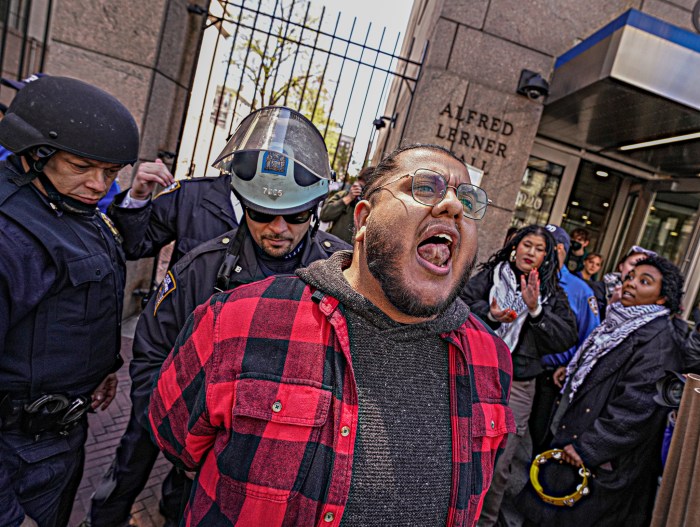
Shiny new towers are transforming the landscape near 10th Avenue and 35th Street.
But one storefront retains the flavor of the old West Side of Manhattan, and behind its doors, workers practice a craft that dates back generations.
Veterans Chair Caning and Repair has been fixing broken legs, seats and fraying cane for more than 100 years.
It is intricate and painstaking work that involves either hand weaving the cane or installing machine-produced sheets of cane to the backs of chairs. The cane is then custom stained to match the original.
“We weave seats with all types of materials — rush, Danish Cord, 6 mm binding cane,” said Sean Bausert, 45, who works in the shop and runs the business. “Each chair determines what you can put on it.”
Back in 1899, Bausert’s family started the business, which is named for its founder, who fought in the Spanish-American War. Veterans Chair Caning and Repair was initially located on the Upper East Side, but moved to the West Side more than 50 years ago.
Chairs are stacked in the front of the store, patiently waiting their turn. They come in every shape, size and style: family heirlooms, simple kitchen chairs and well-worn rockers.
“More people are keeping their chairs,” said Bausert, describing a trend he noticed in the wake of the 2008 financial crisis. “They are trying to save what they have rather than buying a new set of chairs for thousands of dollars.”
Additionally, new chairs rarely match the heft and quality of older chairs, according to Bausert.
His team dismantles and reglues wobbly chairs and replaces broken wicker. The artisans who work in the back of the shop can weave any design of cane for clientele, which includes art houses, interior designers and every day New Yorkers.
Prices range from $65 and up to install machine-produced pieces of cane to $300 and up for handwoven cane.
While business is busy, Bausert is not sure how many more years he can keep the 10th Avenue location. Other tenement buildings have been torn down to make way for upscale housing and hotels.
Preservationist Jeremiah Moss, who has been chronicling the demise of distinctive New York City shops, bars and eateries for a decade, described this as part of the “Hudson Yards Effect,” where a massive redevelopment project is altering the neighborhood.
He said small businesses like Veterans “lend unique character to the city, unlike the national and global chains that make New York look and feel like a generic, corporate anywhere and nowhere.”
Moss, author of the blog and book titled “Vanishing New York,” said these stores provide stability to their neighborhoods.
“When rent is affordable, small businesses can stay in place for many years, becoming part of the social fabric,” Moss told amNewYork. “When rent is high, there is high turnover, and neighborhoods are destabilized — the social fabric is ripped and ripped again.”
Bausert said there is no replacement for the personalized service and attention to detail that independently-owned businesses like Veterans offers customers.
“I’m the one who sees every single piece before it goes out,” said Bausert. “My standards are going to be higher than just about anybody’s. If I don’t like it, it’s not going to leave the shop.”

















